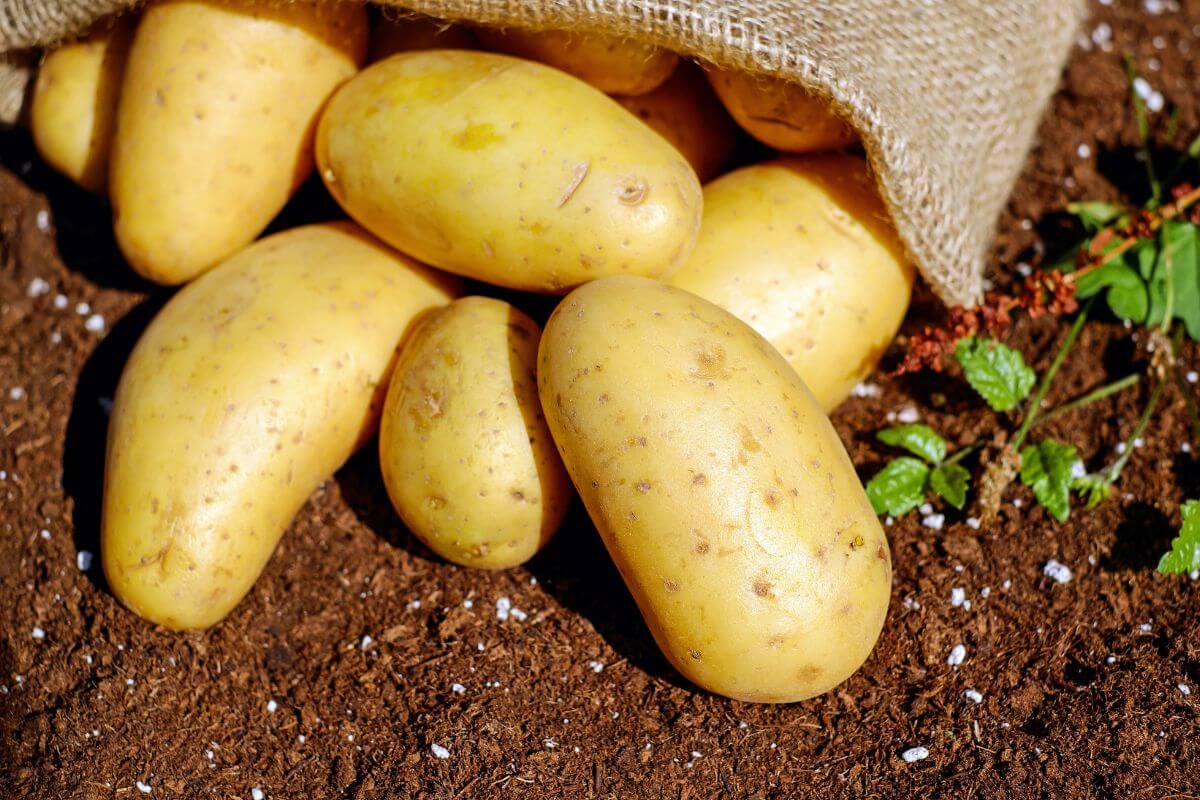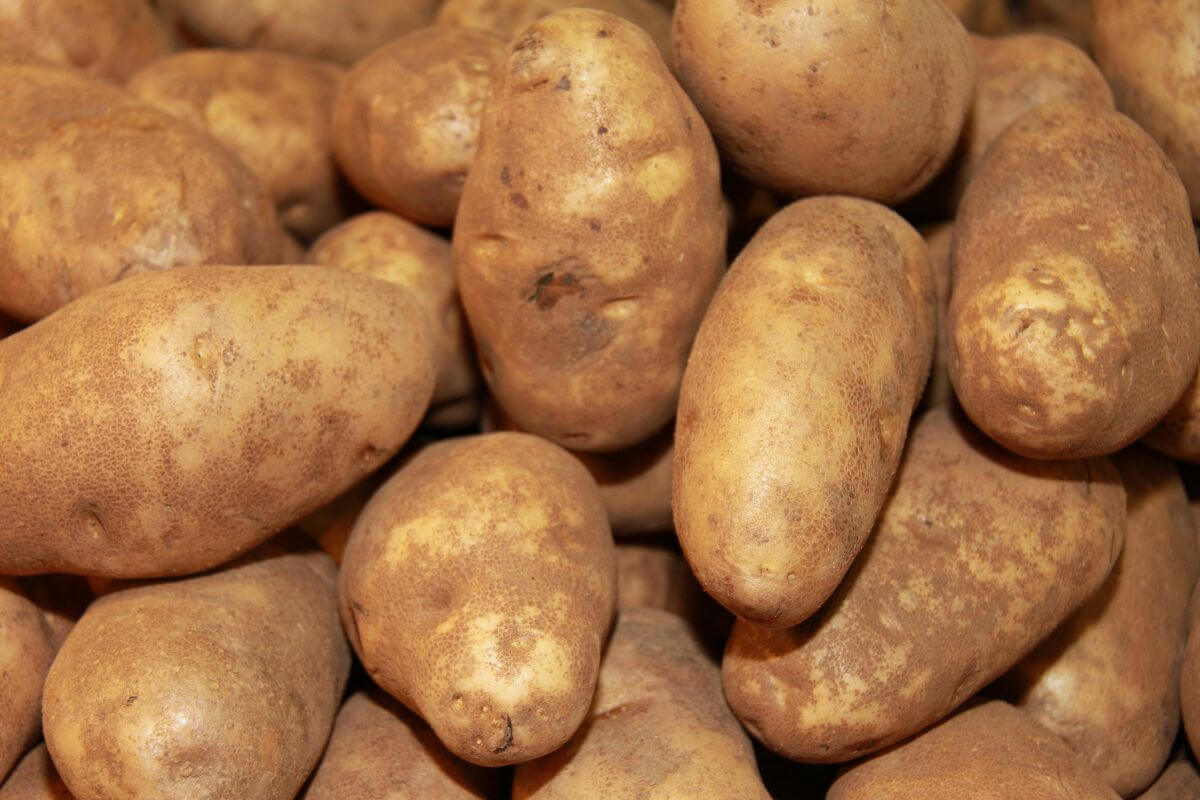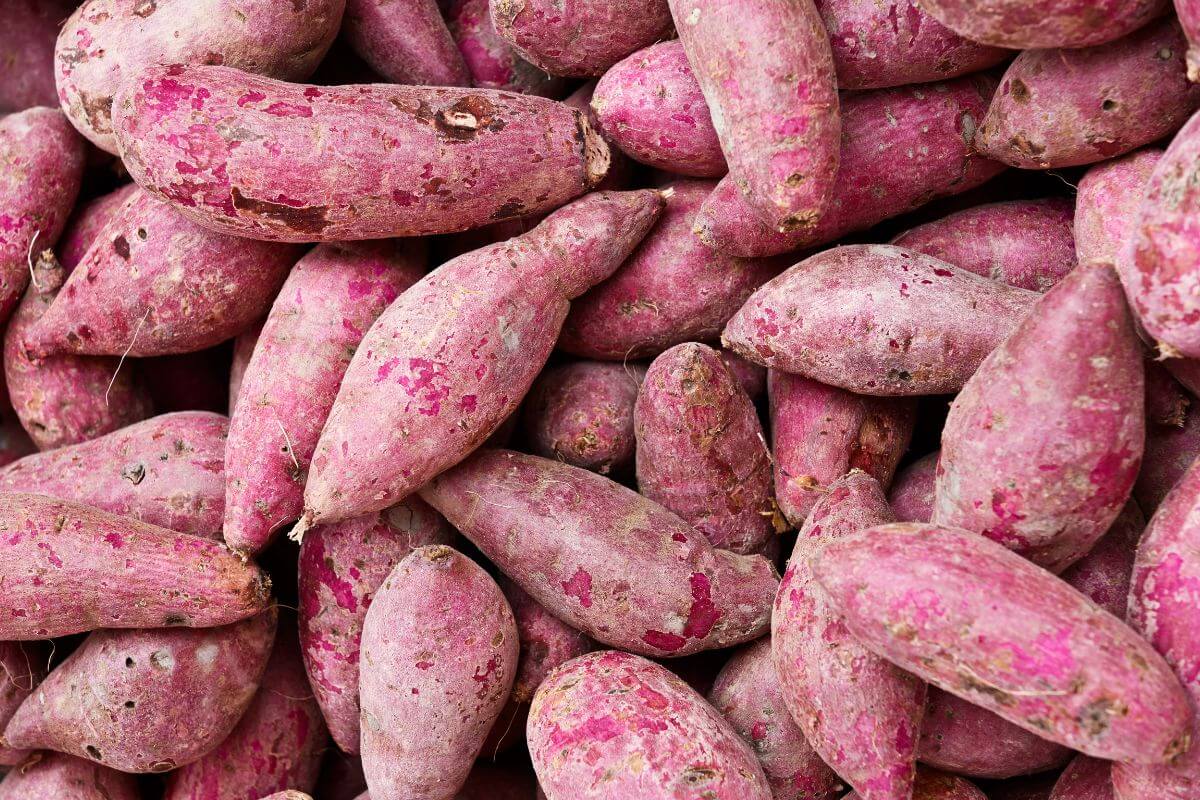Potatoes are versatile kitchen staples that often spark curiosity about their classification. Let’s dig in and settle this spud debate once and for all.
I’ll dive into the botanical and culinary worlds to uncover why potatoes are firmly rooted as vegetables. Explore how their growth, seedless nature, and savory use in dishes set them apart from fruits. Plus, I’ll highlight their nutritional perks and why they fit snugly into the vegetable category.
Curious to know more about what makes a potato tick? Stick around to uncover the fascinating facts about this humble tuber. Whether you’re a seasoned gardener or a curious cook, this article will satisfy your potato curiosity.
- Related article: Vegetable and Fruit Comparison
4 Key Takeaways on Is Potato a Fruit or Vegetable
- Potatoes are a type of vegetable. They’re tubers, which means they grow underground. They’re part of the nightshade family called Solanaceae. You can find them all over the world because people love eating their edible tubers.
- Potatoes pack a punch in the nutrition department. They’re full of carbohydrates and give you essential nutrients like potassium and vitamin C. This makes them a staple in a balanced diet.
- In the kitchen, potatoes are versatile. You can use them in many savory dishes. This versatility ties them more closely to vegetables than fruits.
- There are many types of potatoes. Each type works well for different recipes, and they all offer health benefits.
Is Potato a Fruit or a Vegetable?

Potatoes spark a common debate: Are they fruits or vegetables? Let’s clear this up. Potatoes are vegetables, specifically root vegetables or tubers. We grow them annually for their edible parts, even though these parts come from the plant’s root system.
Potatoes come from the perennial plant Solanum tuberosum and belong to the nightshade family, Solanaceae. While they’re native to the Americas, people around the world cultivate and enjoy them.
Here’s why we classify potatoes as vegetables:
- Botanical Classification – Potatoes are tubers, swollen underground stems storing nutrients, not developing from the plant’s flowers like fruits do.
- Lack of Seeds – Potatoes don’t have seeds in the part we eat. The actual fruits are small, inedible berries with seeds, but we don’t consume these.
- Culinary Use – We mainly use potatoes in savory dishes, boiling, baking, or frying them. This use aligns with vegetables, unlike fruits, which are usually sweet and eaten raw or in desserts.
- Nutritional Profile – High in carbohydrates and starch, potatoes also provide essential vitamins and minerals like potassium and vitamin C, typical of vegetables.
- Dietary Guidelines – Nutrition guidelines classify potatoes as vegetables, highlighting the need for a variety of vegetables in a balanced diet for good health.
So, next time you enjoy a potato dish, remember, you’re savoring a hearty vegetable, not a fruit.
Are Potatoes Considered a Starch?
The United States Department of Agriculture (USDA) groups vegetables into five types:
- Beans and peas
- Dark green veggies
- Red and orange veggies
- Starchy veggies
- Other veggies
Potatoes fall under starchy veggies. They have more starch than other vegetables. Starch is a carb, and carbs are key for a healthy diet because they give us energy.
Carbs come in two forms: simple and complex. Sugar is a simple carb. Potatoes are complex carbs because they’re made of linked sugar molecules.
Common Types of Potatoes

With over 4,000 types of potatoes out there, it’s tough to cover them all. But let’s focus on the popular ones that every potato fan should know.
Potatoes come in different types, each with its own flavor and best uses. Here’s a quick guide to the main ones:
- Russet Potatoes – These big, brown potatoes are perfect for baking and frying. Their starchy inside makes the fluffiest mashed potatoes.
- Red Potatoes – Small to medium with smooth, red skin. They stay firm when boiled or roasted, making them great for salads.
- White Potatoes – Medium-sized with light tan skin. They’re super versatile and good for baking, frying, and creamy mashed potatoes.
- Yellow Potatoes – With their golden skin and buttery flavor, they’re awesome for roasting and mashing.
- Blue/Purple Potatoes – These have a unique color and a slightly nutty taste, perfect for adding a pop of color to salads.
- Fingerling Potatoes – Small and long, these come in various colors and are great for roasting.
Petite Potatoes – Bite-sized and quick to cook, they’re ideal for whole roasting or salads.
Each of these potato types brings something special to the table, making our meals more delicious and interesting.
Are Sweet Potatoes Considered Potatoes?

Technically, Sweet Potatoes are root vegetables, but they are not like regular potatoes. Although they are root vegetables, they are not classified as tubers, even if they also belong to the nightshade family.
The sweet potato skin has a reddish-orange color that is much tougher, so sweet potato recipes will call for peeling either before or after cooking.
The inner flesh is a bright orange hue that is sweet to the taste and features a creamy texture. The sweet flavor is a reason that some people will call sweet potatoes a fruit in a culinary classification, but they’re still not a fruit in that sense.
The sweet potato works well in both sweet and savory recipes. A delightful addition to your menu when baked, mashed, or roasted.
- Read more in our guide: Is Sweet Potato a Fruit or Vegetable?
What Are the Health Benefits of Potatoes?

Potatoes are more than just a tasty addition to our meals; they’re packed with health benefits that might surprise you. Let’s dive into why adding this humble root vegetable to your diet is a smart choice.
- Aids in Digestion – First off, potatoes are great for your digestion. They’re loaded with fiber, which is essential for keeping your digestive system running smoothly. Plus, they contain resistant starch that acts like a prebiotic, feeding the good bacteria in your gut.
- Supports Heart Health – When it comes to heart health, potatoes have you covered. They’re naturally low in sodium and fat, making them a heart-friendly food. A medium potato also gives you 18% of your daily potassium needs, a key player in keeping your blood pressure in check and reducing heart disease risk.
- Boosts the Immune System – Potatoes are also a boost for your immune system. One medium potato offers 30% of your daily vitamin C, an antioxidant that helps keep your immune system strong. And for your bones, they’re rich in minerals like iron, calcium, and magnesium, which are vital for bone strength.
- Packed With Antioxidants – Don’t forget about the antioxidants in potatoes. They’re packed with flavonoids, carotenoids, and phenolic acids that fight free radicals, helping to lower the risk of chronic diseases.
- Aids in Weight Management – If you’re watching your weight, potatoes can help with that, too. The fiber and resistant starch make you feel fuller, which can lead to eating fewer calories overall. Plus, they provide essential vitamins like B6 and niacin for metabolism support, protein, and compounds like choline that may reduce inflammation.
To get the most out of your potatoes, cook them in healthy ways like baking, boiling, or roasting, and keep the skin on. This way, you tap into all the nutrients they offer. Including potatoes in a balanced diet can bring you all these health perks and more.
Different Ways to Add Potatoes to Your Diet
Potatoes are super versatile and can fit into any meal. Here are some easy and healthy ways I enjoy adding them to my diet:
- Baked Potatoes – Bake whole potatoes and top them with Greek yogurt, chives, or steamed veggies. It’s simple and nutritious.
- Mashed Potatoes – Use low-fat milk instead of cream for a healthier mash. Adding cauliflower boosts the nutrition.
- Roasted Potatoes – Wedges tossed in olive oil and herbs, then roasted, make for a crispy, flavorful side.
- Potato Salad – Boiled waxy potatoes mixed with olive oil, vinegar, and herbs make a light, tasty salad.
Soups and Stews – Diced potatoes in my soups and stews add texture and help thicken the broth. - Hash Browns – Grated potatoes pan-fried with minimal oil and veggies make a great breakfast.
Tater Tots or Potato Waffles – Bake my own by mixing grated potatoes with seasonings. It’s healthier than frying. - Potato Frittata – Cooked potatoes in a frittata with veggies and cheese make a hearty brunch.
Stuffed Potatoes – Fill hollowed baked potatoes with beans, cheese, and veggies for a satisfying meal. - Potato Pancakes – Grated potatoes with eggs and flour, pan-fried, are delicious with applesauce or yogurt.
- Smashed Potatoes – Boiled and then roasted small potatoes are crispy and delightful.
- Potato and Vegetable Stir-Fry – Quick and nutritious, I stir-fry diced potatoes with other veggies and protein.
- Potato Chips – Baked potato chips made by slicing and baking with a bit of olive oil are a healthier snack.
- Breakfast Burritos – Cooked potatoes in burritos with eggs and cheese make for a filling breakfast.
Colcannon – Mixing mashed potatoes with sautéed cabbage or kale is a comforting, nutritious side.
These ideas show just how adaptable potatoes are, making it easy to enjoy them while keeping meals healthy.
Is Potato a Fruit or Vegetable Final Thoughts
Potatoes are more than just a vegetable, they’re a kitchen superstar. You can bake, mash, roast, or toss them into salads, soups, and even breakfast plates. They fit right into a diet that’s both healthy and tasty. With potatoes, the ways to enjoy them are endless, making every meal a chance to get creative and nutritious.
Is Potato a Fruit or Vegetable FAQs
1. Why Is a Potato a Vegetable?
Potatoes are vegetables because they are the part of the plant you can eat. They grow from a thickened stem underground, which is known as a tuber.
2. What Type of Food Is a Potato?
Potatoes grow underground on the roots of their plant. They’re starchy vegetables packed with carbohydrates. Your body turns these carbs into glucose to give you energy.
3. When Did Potatoes Become a Vegetable?
Potatoes were first grown in the Andes Mountains of South America between 8,000 and 5,000 BC. Potatoes were the first vegetable people in that area started farming.
Here are other articles you may be interested in:

